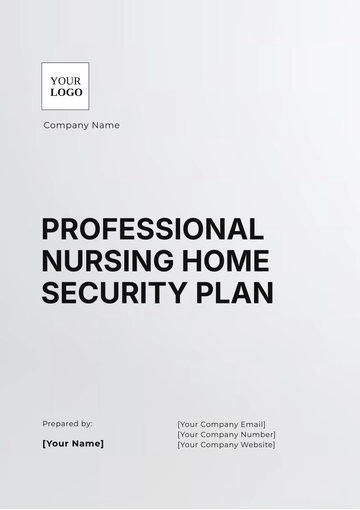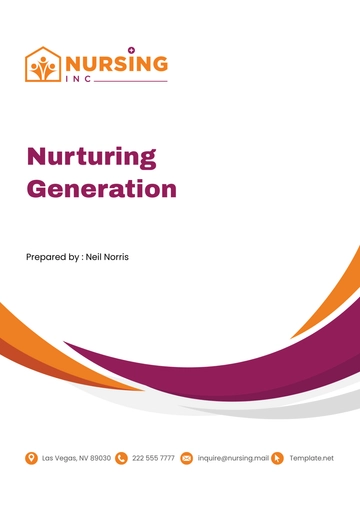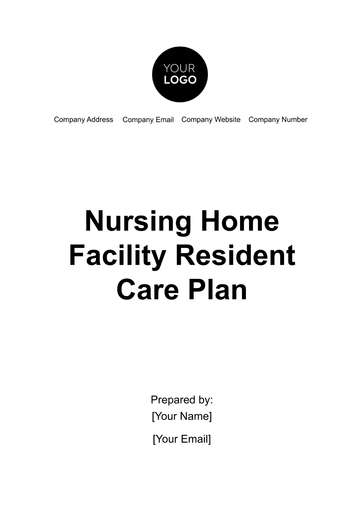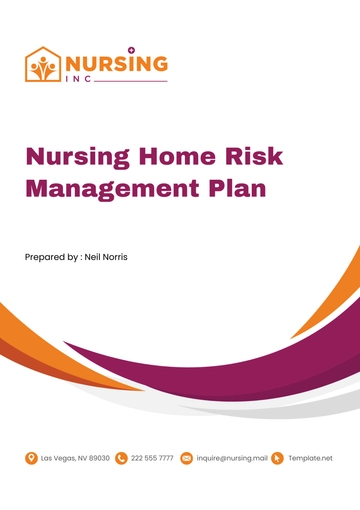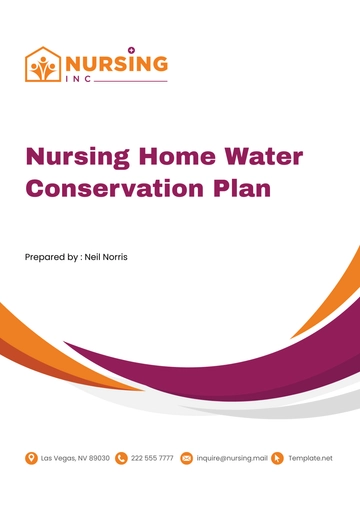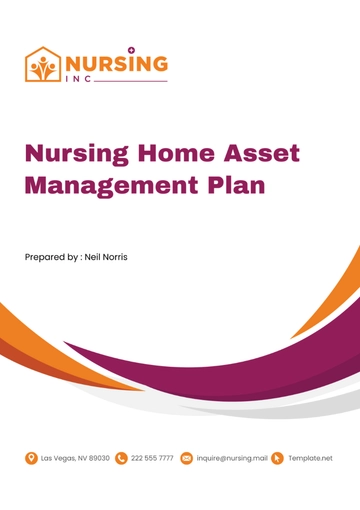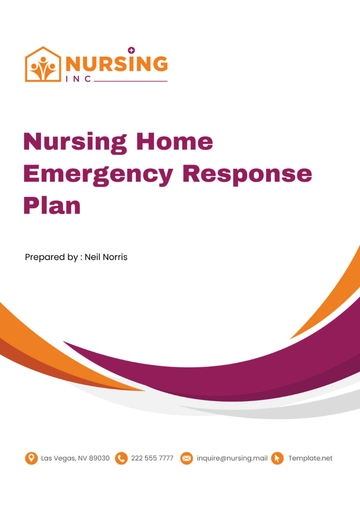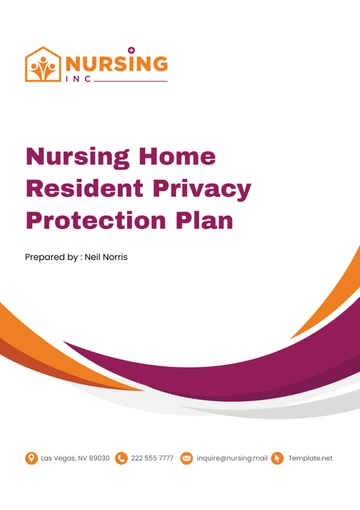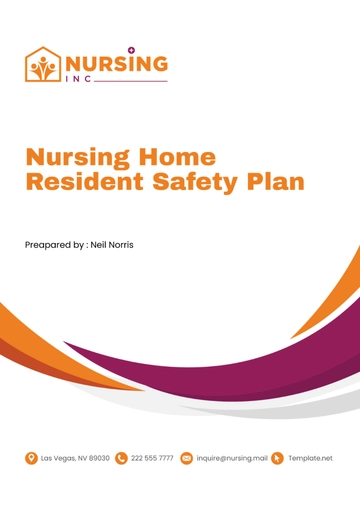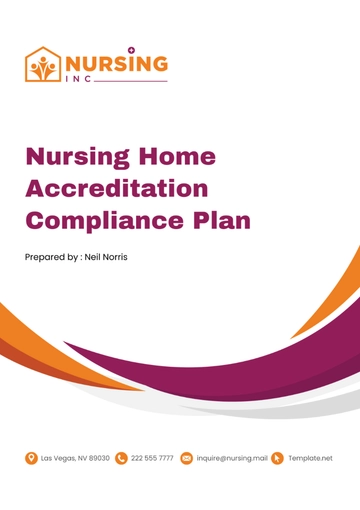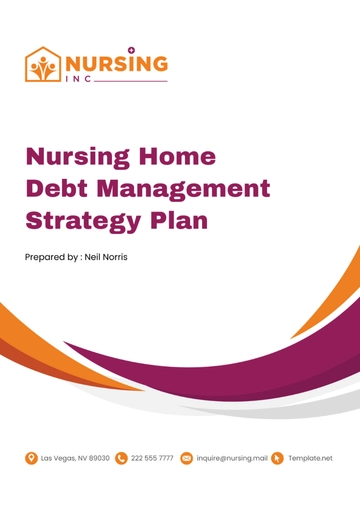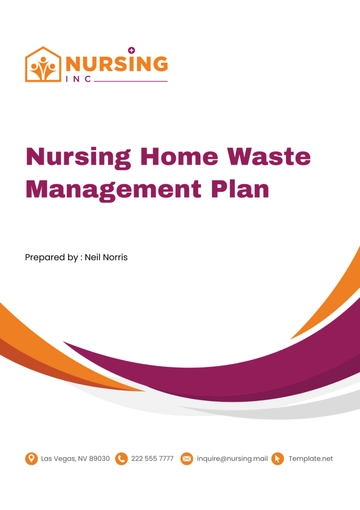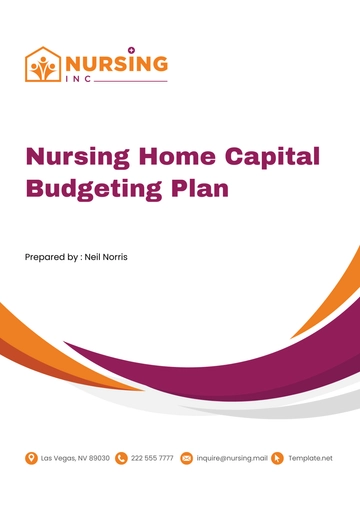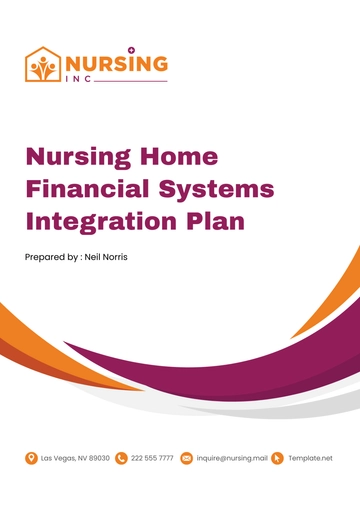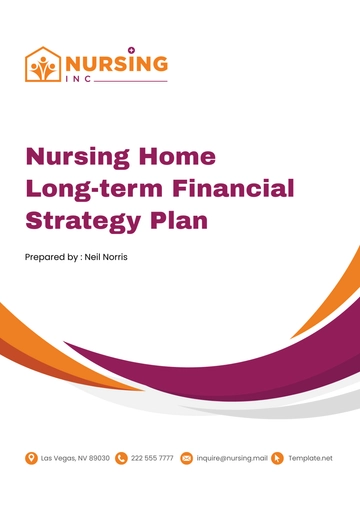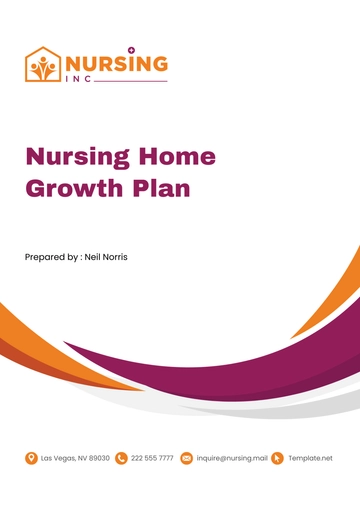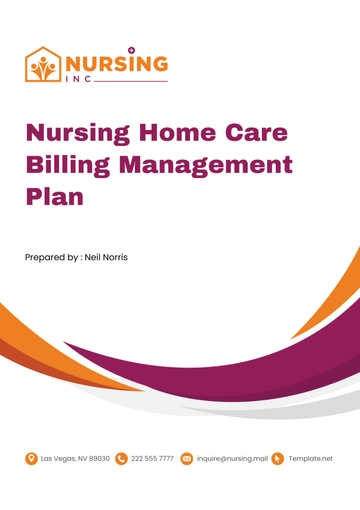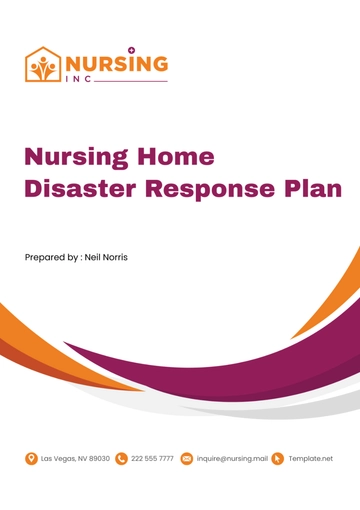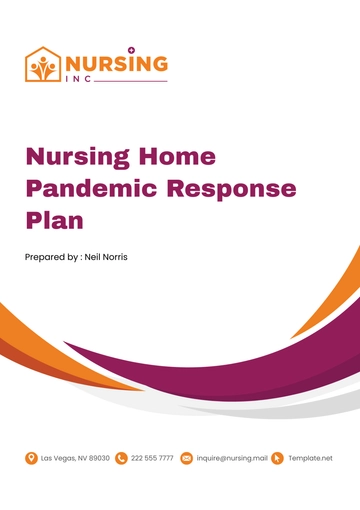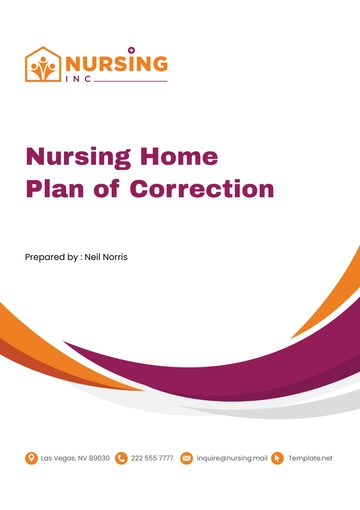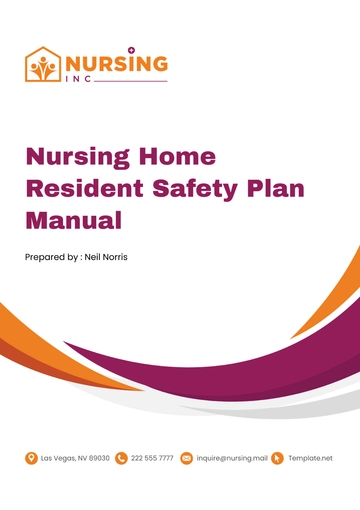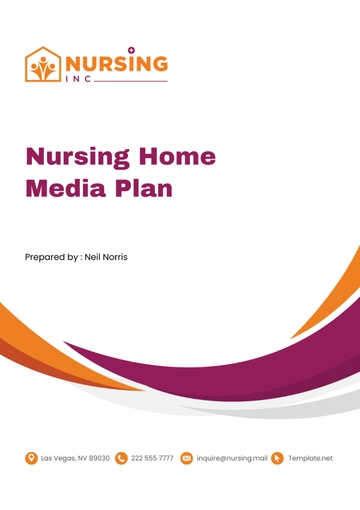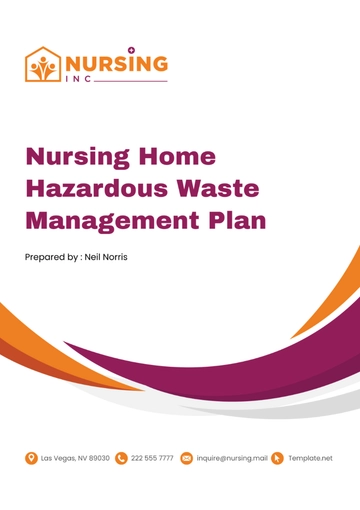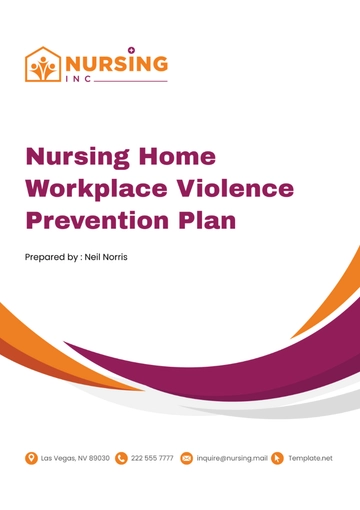Free Nursing Home Media Plan

I. Executive Summary
A. Overview
[Your Company Name], a leading provider of senior care services, recognizes the paramount importance of effective media planning in nursing homes. As part of our commitment to excellence, we have devised a comprehensive media plan tailored to the unique needs of nursing home residents, their families, and the broader community. By leveraging targeted communication channels and engaging content, we aim to enhance communication, foster community connections, and elevate our brand presence within the senior care landscape.
B. Objectives
Increase resident engagement and satisfaction by delivering informative and entertaining content that resonates with their interests and preferences.
Facilitate seamless communication between nursing home staff, residents, and their families to ensure transparency, trust, and peace of mind.
Cultivate a positive reputation and build brand awareness within the local community through meaningful interactions, community involvement, and impactful storytelling.
Drive occupancy rates through strategic marketing efforts that showcase our commitment to exceptional care and quality of life for seniors.
II. Target Audience Analysis
A. Residents
Audience Segment | Characteristics | Communication Preferences |
|---|---|---|
Nursing Home Residents | Seniors aged [70-100] | Prefer easily digestible content such as large print materials, audiovisual presentations, and interactive activities. |
Varied interests including entertainment, health, and socialization. | Prefer face-to-face communication, group activities, and personalized attention from staff. |
[Your Company Name] recognizes that nursing home residents constitute a diverse group with unique needs and preferences. Our media plan aims to cater to their interests and enhance their quality of life by providing engaging content, interactive experiences, and personalized interactions with staff members.
B. Families
Audience Segment | Characteristics | Communication Preferences |
|---|---|---|
Family Members of Residents | Adults aged [40-70] | Value transparent communication, regular updates, and opportunities for involvement in their loved one's care. |
Seek reassurance regarding the well-being, safety, and happiness of their family member. | Prefer a combination of digital communication channels (email, social media) and in-person interactions with nursing home staff. |
Family members play a crucial role in the lives of nursing home residents, providing support, companionship, and advocacy. Our media plan aims to foster open communication, provide timely updates, and offer resources to support families in their caregiving journey.
C. Community
Audience Segment | Characteristics | Communication Preferences |
|---|---|---|
Local Community Members | Diverse demographics including adults, families, and community leaders. | Interested in community events, initiatives, and opportunities for involvement. |
Value organizations that contribute positively to the community and demonstrate social responsibility. | Prefer communication channels such as community newsletters, local events, and social media platforms. |
Engaging with the local community is essential for [Your Company Name] to establish trust, build relationships, and showcase our commitment to senior care excellence. Our media plan includes initiatives to actively participate in community events, share stories of impact, and foster meaningful connections with community members.
III. Media Channels and Strategies
A. Internal Communication
Utilize various internal communication channels to ensure effective information dissemination and engagement within the nursing home community. This includes:
Digital Signage: Install digital displays strategically placed throughout the facility to showcase announcements, event schedules, health tips, and other relevant information.
Newsletters: Create monthly newsletters distributed to residents, families, and staff members, featuring updates, success stories, upcoming events, and important reminders.
Bulletin Boards: Maintain bulletin boards in communal areas to display notices, activity calendars, resident achievements, and staff recognitions.
Internal Communication Platform: Implement a user-friendly digital platform or intranet where staff members can access important documents, communicate with colleagues, and stay informed about organizational updates and policies.
B. Social Media
Leverage popular social media platforms to connect with various stakeholders and showcase the vibrant community life at [Your Company Name]. Key strategies include:
Facebook: Maintain an active Facebook page to share photos, videos, resident testimonials, event highlights, and educational content. Encourage community engagement through likes, comments, and shares.
Twitter: Use Twitter to share real-time updates, news articles, health tips, and community initiatives. Engage with followers by participating in relevant conversations and using trending hashtags.
Instagram: Share visually appealing content, such as resident artwork, scenic views of the facility, staff spotlights, and behind-the-scenes glimpses. Use Instagram stories to provide daily updates and interactive polls.
Engagement Strategies: Foster engagement by hosting interactive Q&A sessions, contests, virtual tours, live streams of events, and user-generated content campaigns.
C. Website and Blog
Enhance the [Your Company Name] website as a central hub for information, resources, and engagement opportunities. Key strategies include:
Website Revamp: Update the website design, navigation, and content to provide a user-friendly experience for visitors. Include sections for prospective residents, families, staff, and community members.
Virtual Tours: Offer virtual tours of the facility to prospective residents and families, showcasing amenities, living spaces, dining options, and recreational activities.
Blog Development: Launch a blog featuring articles on senior health and wellness, caregiving tips, resident stories, staff profiles, community events, and industry trends. Encourage readers to subscribe for regular updates and share articles on social media.
D. Email Marketing
Develop a targeted email marketing strategy to deliver personalized content, updates, and promotions directly to residents, families, and community partners. Key strategies include:
Segmented Email Lists: Segment email lists based on audience preferences, interests, and engagement levels to deliver relevant content and maximize engagement.
Monthly Newsletters: Create monthly newsletters featuring highlights, upcoming events, resident spotlights, staff recognitions, and community partnerships. Include links to blog articles, social media profiles, and event registration pages.
Automated Campaigns: Implement automated email campaigns for birthday greetings, holiday wishes, appointment reminders, satisfaction surveys, and follow-ups after facility tours or events.
IV. Content Calendar and Budget Allocation
A. Content Calendar
Develop a comprehensive content calendar to plan and organize media content across various channels. The calendar will include:
Monthly Themes: Define monthly themes or topics aligned with resident interests, seasonal events, health observances, and community initiatives.
Content Types: Identify a mix of content types, including articles, videos, infographics, interviews, testimonials, event promotions, and interactive polls.
Publication Schedule: Determine the frequency and timing of content publication for each channel, considering audience habits, peak engagement times, and content relevance.
Assign Responsibilities: Assign roles and responsibilities for content creation, editing, approval, and publishing to ensure timely execution and accountability.
B. Budget Allocation
Allocate resources effectively to support the implementation of the media plan and achieve desired outcomes. Key budget allocations include:
Content Creation: Allocate funds for content creation, including photography, videography, graphic design, copywriting, and editing services.
Advertising and Promotion: Allocate a portion of the budget for social media advertising, boosted posts, sponsored content, and targeted email campaigns to expand reach and engagement.
Technology and Tools: Invest in technology platforms, analytics tools, scheduling software, and digital signage solutions to streamline media management and measurement.
Staff Training and Development: Allocate funds for staff training programs, workshops, and certifications to enhance digital literacy, content creation skills, and communication strategies.
V. Performance Tracking and Evaluation
A. Key Performance Indicators (KPIs)
To assess the effectiveness of our media plan and ensure alignment with our objectives, we will monitor the following key performance indicators (KPIs) across various media channels:
KPI | Measurement Method |
|---|---|
Website Traffic | Analyze website traffic using Google Analytics to track the number of visitors, page views, session duration, and bounce rate. Identify top-performing pages, referral sources, and conversion funnels. |
Social Media Engagement | Monitor social media engagement metrics, including likes, comments, shares, retweets, mentions, and follower growth, using platform insights and analytics tools. Analyze engagement trends over time and identify content types and topics that resonate most with the audience. |
Email Open Rates | Track email open rates, click-through rates (CTRs), conversion rates, and unsubscribe rates to assess the effectiveness of email campaigns and content relevance. Segment email lists based on audience preferences and behavior to deliver targeted content and improve engagement metrics. |
Event Attendance | Record attendance numbers and participant feedback for events, workshops, and community outreach activities to evaluate engagement and interest levels. Measure the impact of events on brand awareness, community perception, and lead generation. |
Resident Satisfaction | Conduct regular resident satisfaction surveys, focus groups, or one-on-one interviews to gather feedback on media content, communication channels, and overall experience. Assess resident satisfaction with activities, amenities, staff interactions, and overall quality of life indicators. |
Occupancy Rates | Monitor occupancy rates and inquiries generated through media channels to evaluate the impact on occupancy and lead conversion. Analyze trends in inquiries, admissions, and resident turnover to identify opportunities for occupancy optimization and marketing effectiveness. |
B. Analytics and Reporting
We will utilize a combination of analytics tools and reporting mechanisms to track performance, analyze data trends, and derive actionable insights:
Analytics Tool | Purpose |
|---|---|
Google Analytics | Track website traffic, user behavior, audience demographics, and conversion metrics to measure website performance and identify areas for improvement. Set up custom dashboards and reports to monitor key metrics and track progress towards goals. |
Social Media Insights | Use built-in analytics features on social media platforms (e.g., Facebook Insights, Twitter Analytics) to monitor engagement, audience demographics, content reach, and follower growth. Analyze post performance, audience sentiment, and competitor benchmarking to refine social media strategies. |
Email Marketing Platforms | Utilize email marketing platforms (e.g., Mailchimp, Constant Contact) to analyze email campaign performance, including open rates, click-through rates, subscriber behavior, and campaign effectiveness. A/B test subject lines, content formats, and send times to optimize email engagement and conversion rates. |
Event Management Software | Employ event management software (e.g., Eventbrite, Meetup) to track event registrations, attendance, participant demographics, feedback, and event ROI. Monitor event engagement metrics, such as session attendance, speaker ratings, and networking interactions, to evaluate event success and inform future planning. |
Reporting
We will generate regular performance reports summarizing key metrics, trends, and insights across media channels. These reports will be shared with stakeholders, including senior management, marketing team members, and relevant departments, to inform decision-making and optimize media strategies.
Performance reports will include visualizations such as charts, graphs, and tables to present data in a clear and concise manner. Reports will highlight successes, areas for improvement, and recommendations for adjustments to the media plan. Additionally, we will provide comparative analyses, year-over-year performance comparisons, and actionable insights for continuous improvement.
VI. Conclusion
[Your Company Name] is dedicated to implementing a robust media plan designed to enhance communication, engagement, and brand awareness within the nursing home community. By leveraging a diverse range of media channels and strategies, we are poised to achieve our objectives of enriching the lives of residents, supporting their families, and contributing positively to the local community.
We remain committed to monitoring performance closely, evaluating outcomes rigorously, and adapting our approach dynamically to ensure continued success and excellence in senior care communication. Through transparency, innovation, and collaboration, [Your Company Name] will continue to set the standard for media excellence in the nursing home industry. We look forward to achieving measurable results, fostering meaningful connections, and making a positive impact on the lives of seniors and their families.
- 100% Customizable, free editor
- Access 1 Million+ Templates, photo’s & graphics
- Download or share as a template
- Click and replace photos, graphics, text, backgrounds
- Resize, crop, AI write & more
- Access advanced editor
Develop comprehensive marketing strategies with the Nursing Home Media Plan Template from Template.net. Editable and customizable, it facilitates the creation of detailed plans for advertising and promotional activities. Tailor it effortlessly using our Ai Editor Tool for personalized media plans. Maximize outreach and attract residents effectively with this essential template.
You may also like
- Finance Plan
- Construction Plan
- Sales Plan
- Development Plan
- Career Plan
- Budget Plan
- HR Plan
- Education Plan
- Transition Plan
- Work Plan
- Training Plan
- Communication Plan
- Operation Plan
- Health And Safety Plan
- Strategy Plan
- Professional Development Plan
- Advertising Plan
- Risk Management Plan
- Restaurant Plan
- School Plan
- Nursing Home Patient Care Plan
- Nursing Care Plan
- Plan Event
- Startup Plan
- Social Media Plan
- Staffing Plan
- Annual Plan
- Content Plan
- Payment Plan
- Implementation Plan
- Hotel Plan
- Workout Plan
- Accounting Plan
- Campaign Plan
- Essay Plan
- 30 60 90 Day Plan
- Research Plan
- Recruitment Plan
- 90 Day Plan
- Quarterly Plan
- Emergency Plan
- 5 Year Plan
- Gym Plan
- Personal Plan
- IT and Software Plan
- Treatment Plan
- Real Estate Plan
- Law Firm Plan
- Healthcare Plan
- Improvement Plan
- Media Plan
- 5 Year Business Plan
- Learning Plan
- Marketing Campaign Plan
- Travel Agency Plan
- Cleaning Services Plan
- Interior Design Plan
- Performance Plan
- PR Plan
- Birth Plan
- Life Plan
- SEO Plan
- Disaster Recovery Plan
- Continuity Plan
- Launch Plan
- Legal Plan
- Behavior Plan
- Performance Improvement Plan
- Salon Plan
- Security Plan
- Security Management Plan
- Employee Development Plan
- Quality Plan
- Service Improvement Plan
- Growth Plan
- Incident Response Plan
- Basketball Plan
- Emergency Action Plan
- Product Launch Plan
- Spa Plan
- Employee Training Plan
- Data Analysis Plan
- Employee Action Plan
- Territory Plan
- Audit Plan
- Classroom Plan
- Activity Plan
- Parenting Plan
- Care Plan
- Project Execution Plan
- Exercise Plan
- Internship Plan
- Software Development Plan
- Continuous Improvement Plan
- Leave Plan
- 90 Day Sales Plan
- Advertising Agency Plan
- Employee Transition Plan
- Smart Action Plan
- Workplace Safety Plan
- Behavior Change Plan
- Contingency Plan
- Continuity of Operations Plan
- Health Plan
- Quality Control Plan
- Self Plan
- Sports Development Plan
- Change Management Plan
- Ecommerce Plan
- Personal Financial Plan
- Process Improvement Plan
- 30-60-90 Day Sales Plan
- Crisis Management Plan
- Engagement Plan
- Execution Plan
- Pandemic Plan
- Quality Assurance Plan
- Service Continuity Plan
- Agile Project Plan
- Fundraising Plan
- Job Transition Plan
- Asset Maintenance Plan
- Maintenance Plan
- Software Test Plan
- Staff Training and Development Plan
- 3 Year Plan
- Brand Activation Plan
- Release Plan
- Resource Plan
- Risk Mitigation Plan
- Teacher Plan
- 30 60 90 Day Plan for New Manager
- Food Safety Plan
- Food Truck Plan
- Hiring Plan
- Quality Management Plan
- Wellness Plan
- Behavior Intervention Plan
- Bonus Plan
- Investment Plan
- Maternity Leave Plan
- Pandemic Response Plan
- Succession Planning
- Coaching Plan
- Configuration Management Plan
- Remote Work Plan
- Self Care Plan
- Teaching Plan
- 100-Day Plan
- HACCP Plan
- Student Plan
- Sustainability Plan
- 30 60 90 Day Plan for Interview
- Access Plan
- Site Specific Safety Plan

